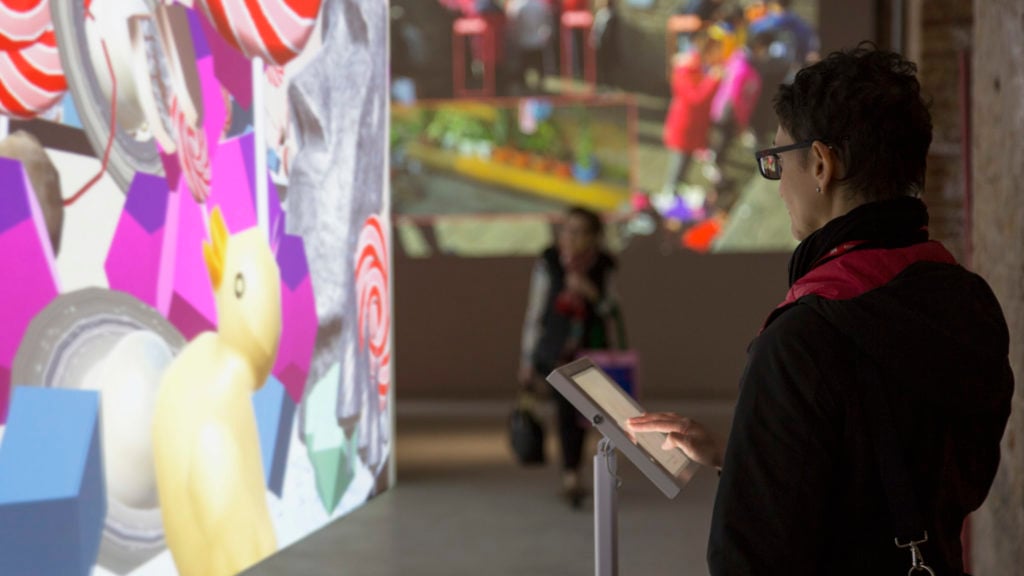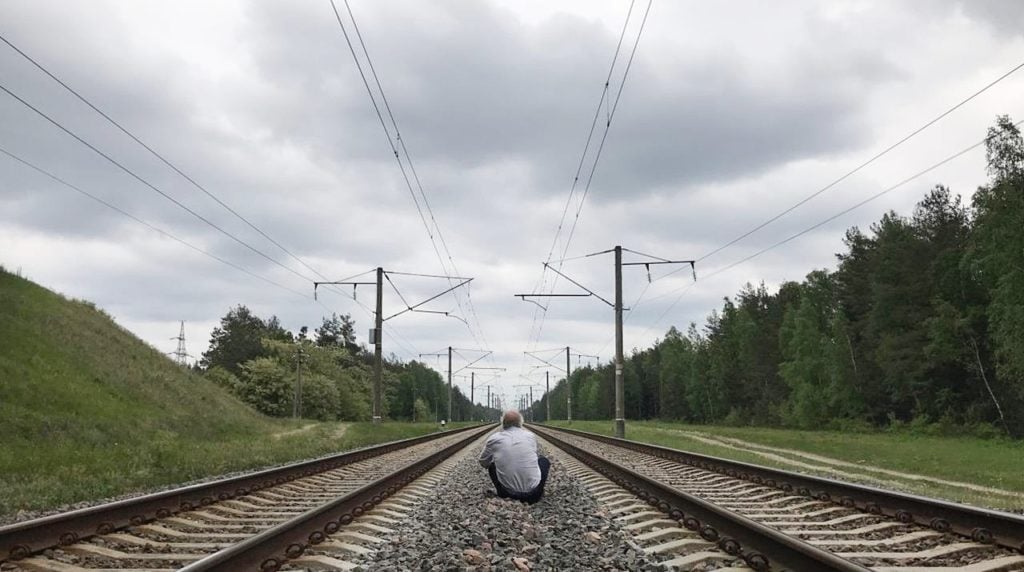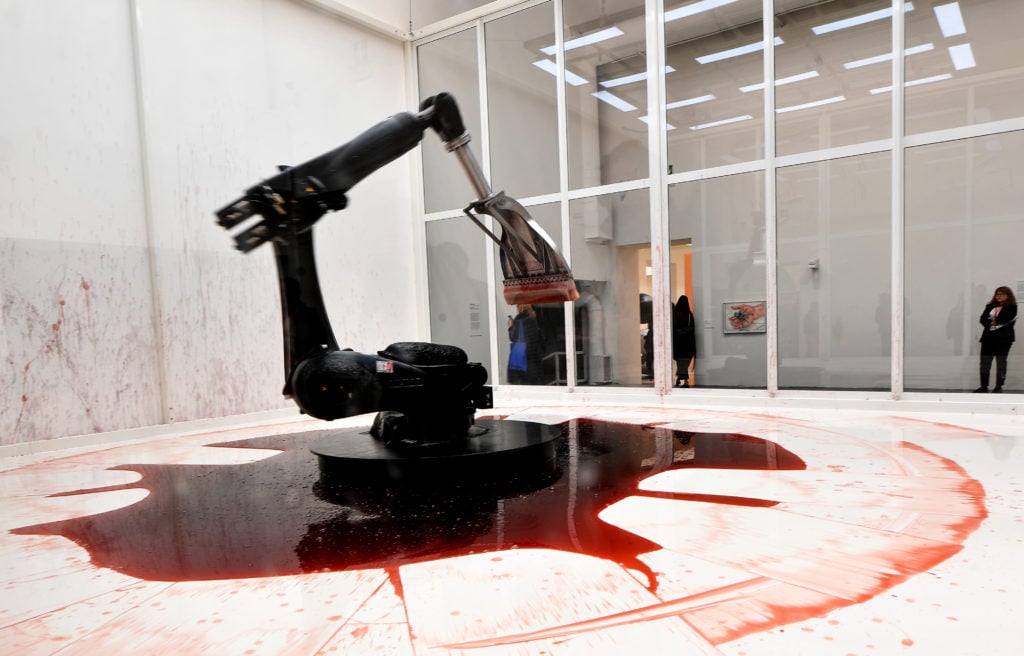On View
‘Only Soft Power Can Last’: How China’s Unusually Low-Key Venice Biennale Pavilion Fits Into Its Strategy for Global Influence
The Chinese Pavilion is more approachable and fun than ever before—and that's no accident.

The Chinese Pavilion is more approachable and fun than ever before—and that's no accident.

Vivienne Chow

The Chinese Pavilion at the 58th Venice Biennale is arguably the least Chinese it has been since it officially launched in 2005. And that is no accident. Curator Wu Hongliang sought to create a show emphasizing the similarities between contemporary Chinese society and the rest of the world.
“People say that Chinese artists always display Chinese symbols in Venice, but this show contains none,” Wu told artnet News. “Elements such as light, water, and the birth of life are universal. This show is not about identifying conflicts and differences. It is about how similar we are facing new problems at interesting times.”
But this show, titled Re-睿, is more than just a direct artistic response to this Biennale’s central exhibition, “May You Live in Interesting Times.” It is also a display of China’s soft-power ambitions.

Artist Chen Qi giving a speech at the opening ceremony in Venice. Photo: Y.C.J.
Opening less than two months after Italy became the first G7 country and the third-largest eurozone economy to back Beijing’s ginormous infrastructural project, the Belt and Road Initiative, and amid China’s ongoing trade-war woes with the United States, the government-driven Chinese Pavilion is an effort to present a friendly face to the world. The motif of bridges running through the exhibition sends viewers a message that this Asian heavyweight hopes to connect, rather than to dominate.
“Art is a form of wisdom to resolve social conflicts and contradictions,” Chen Qi, one of the four artists featured in the pavilion, said during the opening ceremony on May 9.
The Chinese pavilion—whose title combines the English prefix “Re” with the Chinese character “睿” (pronounced rui in Mandarin Chinese), which means wisdom—drew praise during last week’s Biennale preview. Some visitors noted a vastly improved exhibition design inspired by classical Chinese gardens and the fact that organizers finally understood the beauty of “less is more.” Others simply felt it was fun and enjoyable—rather unheard of as a description of the Chinese Pavilion located at the far edge of Arsenale.
“It is already very exhausting walking all the way towards the end of Arsenale to find us,” Wu said. “I want the show to be fun and relaxing.”

Installation view of He Xiangyu’s Everything We Create Is Not Ourselves. Photo: Noshe.
Wu, currently the vice president of the Beijing Fine Art Academy, says he also sought to give more space to fewer artists, rather than trying to cram too much into the 2,100-square-foot pavilion. By designing the exhibition like a Chinese garden, organizers allowed the quartet of chosen artists to occupy their own individual spaces while remaining connected to one another.

Installation view of Geng Xue’s The Name of Gold. Photo: Liu Dapeng.
The four artists from different generations each adopt a different medium to illustrate their take on “Re.” He Xiangyu, born in 1986 and the youngest of the group, created an installation of soft carpet in a warm shade of pink designed to mimic the interior of a mouth. Visitors roaming around the room are meant to experience the discombobulation he felt during his stay in Berlin when he was unable to speak German.
Geng Xue, born in 1983 and the only female artist on the show, presents a stop-motion animated film of clay sculptures that explores the mystic nature of reincarnation, while Chen, born in 1963, has two installations inspired by wormholes found in an ancient Chinese book and their relationship to contemporary scientific research on the subject.

Installation view of Geng Xue’s The Name of Gold. Photo: Liu Dapeng.
Meanwhile, Fei Jun created elaborate digital installations including Re-Search, an augmented reality app that invites users to go on a treasure hunt around Venice to identify old Venetian bridges that are similar to old Chinese bridges displayed on the mobile phone screen.
Another installation is built on an AI-operated categorizing system developed by Fei and a group of engineers using information extracted from Google maps. The machine picks up viewers’ emotions and appearances to deduce elements of his or her identity—whether she is a dancer or a police officer, for example. It is tempting to draw a connection between the installation and China’s controversial social-credit system developed with big data and facial recognition, but Fei says his work is not a critique of surveillance. While it is a big topic in the West, he says, people in China do not think in that way.

A visitor interacting with work by Fei Jun in Interesting World. Photo courtesy of the artist.
“The work is about exploring the machine’s thinking process, which is the algorithm,” Fei said. “We are all being watched, one way or the other. But the interesting thing is you don’t know whom the machine can connect you with.”
China’s participation in the Venice Biennale comes at an undeniably “interesting” point in history. On one hand, the country has grown into the world’s second-largest economy. On the other, it is currently experiencing its slowest economic growth in nearly 30 years. At the same time, China and the US have entered into a new phase of their looming trade war, with China announcing plans this week to impose retaliatory tariffs on $60 billion in American goods just days after US President Donald Trump announced he would impose a 25 percent tariff on $200 billion of Chinese imports.
The country’s human rights conditions, meanwhile, are constantly under fire in the west. And there is no lack of controversy surrounding its telecom giant Huawei, which has been accused by the US Department of Justice in January of theft of trade secrets, wire fraud, and obstruction of justice. On Wednesday, Trump signed an order to protect American computer networks from foreign threats, a move targeting Huawei.

Still from YI DAI YI LU: One Belt One Road. Courtesy of YouTube.
Amid all this chaos, China’s ambitious infrastructure project, the Belt and Road Initiative, aims to revive the historic Silk Road trade route connecting the Middle Kingdom with the west—and Italy, the home of the Venice Biennale, has become the first Western power to sign on.
Many regard the Belt and Road Initiative as yet another means of China’s expansion. Veteran Italian politician Laura Fincato, who addressed the Chinese pavilion during the Biennale’s opening ceremony, says Italy has been under a lot of pressure from the US, France, and Germany for signing the agreement with China. But, she claims, Italy has a good reason to do so.
“We want to sign in peace, in good progress, without compromising the technology of security, and the parliament agreed,” Fincato said. “It is a very delicate political issue, but I can say it’s a good choice made by my country.”

Still from YI DAI YI LU: One Belt One Road. Courtesy of YouTube.
Italy’s pragmatic approach has drawn criticism as well from those who fear the deal will help China export undemocratic, repressive values. At the Far East Film Festival held in Udine, Italy, just days before the opening of Venice Biennale, a panel discussion following the premiere of Italian documentary Yi Dai Yi Lu One Belt One Road erupted into fierce debate.
“The West in general is ignorant about China,” the film’s director, Italian journalist Pio d’Emilia, said. “We are now living in the China century, and the sooner we realize this, the sooner we can prepare ourselves.”
The Chinese Pavilion at Venice Biennale does not have a long history. China was first invited to take part in 1980, but the country’s submissions to the next two editions—traditional crafts of embroidery and paper-cutting—did not meet the Biennale’s standard for avant-garde contemporary art. After that, official participation went on hiatus, though Chinese artists were still featured in the event’s main exhibition; artist Cai Guo-Qiang won the coveted Golden Lion at the 1999 Biennale for his contribution.
An official Chinese Pavilion did not exist in Venice until 2005. The organization behind the pavilion is China Arts and Entertainment Group Ltd., a state-owned company tasked with promoting China abroad through arts and culture. Since its founding in 2004, it has overseen more than 4,000 events internationally, including performances by the China National Symphony Orchestra and Shanghai Ballet, designed to foster cultural exchange between China and the rest of the world.
China has learned the importance of culture as a tool for global influence from the west, according to d’Emilia. “America has Americanized the world with popular culture and movies,” he said. “Military power might bring upon instant victory, but in the long run it won’t succeed because it gives birth to hatred. Only soft power can last, and China knows it well.”

A general view shows “Can’t Help Myself”, by Chinese artists Sun Yuan and Peng Yu. Photo: TIZIANA FABI/AFP/Getty Images.
Of course, the official narrative is not the only one on display in Venice. Beijing-born Sun Yuan and Peng Yu’s mechanical installations Dear and Can’t Help Myself in the main exhibition have been some of the show’s most photographed attractions, while the Copenhagen-headquartered Faurschou Foundation organized a group show, Entropy, featuring work by seven of China’s leading cutting-edge artists. The foundation’s director Kristian Eley says the exhibition could be seen as a small Chinese pavilion, but with a twist.
In the end, however, the Chinese pavilion remains the country’s most-funded and best-attended contribution to this peerlessly important international art event. Fincato, the Italian politician, says China’s presence in both the art and architecture biennials have already made a difference.
“Every year, you can understand more [about China] through its participation… in the exhibitions that are strongly supported by the Chinese government,” she said. “It is an occasion for Chinese artists to be understood while they are addressing a global audience.”
The 58th Venice International Art Exhibition runs until November 24. “Entropy,” on view at Fondazione Giorgio Cini on San Giorgio Maggiore Island, runs until September 1.